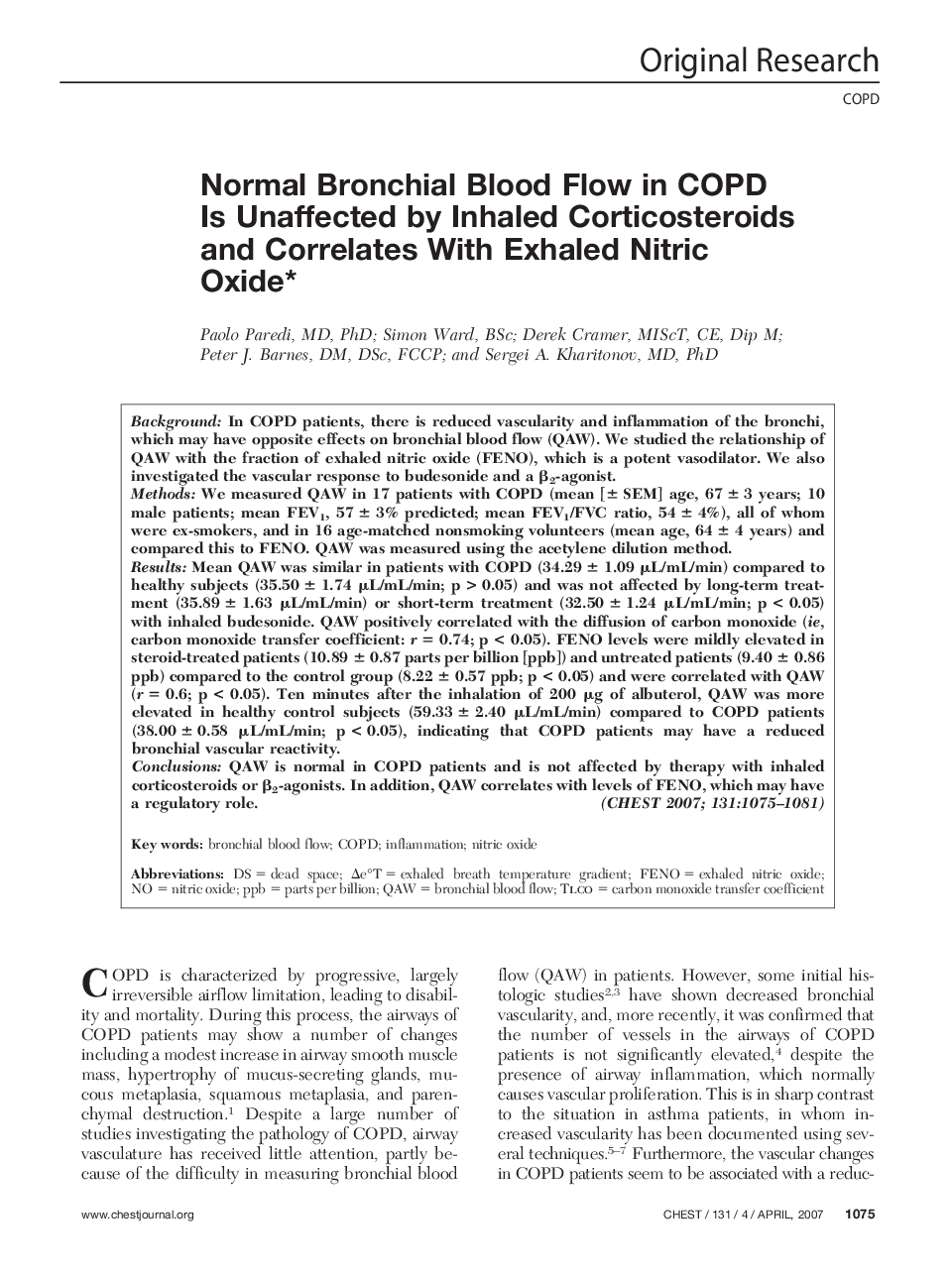| Article ID | Journal | Published Year | Pages | File Type |
|---|---|---|---|---|
| 2905045 | Chest | 2007 | 7 Pages |
BackgroundIn COPD patients, there is reduced vascularity and inflammation of the bronchi, which may have opposite effects on bronchial blood flow (QAW). We studied the relationship of QAW with the fraction of exhaled nitric oxide (FENO), which is a potent vasodilator. We also investigated the vascular response to budesonide and a β2-agonist.MethodsWe measured QAW in 17 patients with COPD (mean [± SEM] age, 67 ± 3 years; 10 male patients; mean FEV1, 57 ± 3% predicted; mean FEV1/FVC ratio, 54 ± 4%), all of whom were ex-smokers, and in 16 age-matched nonsmoking volunteers (mean age, 64 ± 4 years) and compared this to FENO. QAW was measured using the acetylene dilution method.ResultsMean QAW was similar in patients with COPD (34.29 ± 1.09 μL/mL/min) compared to healthy subjects (35.50 ± 1.74 μL/mL/min; p > 0.05) and was not affected by long-term treatment (35.89 ± 1.63 μL/mL/min) or short-term treatment (32.50 ± 1.24 μL/mL/min; p < 0.05) with inhaled budesonide. QAW positively correlated with the diffusion of carbon monoxide (ie, carbon monoxide transfer coefficient: r = 0.74; p < 0.05). FENO levels were mildly elevated in steroid-treated patients (10.89 ± 0.87 parts per billion [ppb]) and untreated patients (9.40 ± 0.86 ppb) compared to the control group (8.22 ± 0.57 ppb; p < 0.05) and were correlated with QAW (r = 0.6; p < 0.05). Ten minutes after the inhalation of 200 μg of albuterol, QAW was more elevated in healthy control subjects (59.33 ± 2.40 μL/mL/min) compared to COPD patients (38.00 ± 0.58 μL/mL/min; p < 0.05), indicating that COPD patients may have a reduced bronchial vascular reactivity.ConclusionsQAW is normal in COPD patients and is not affected by therapy with inhaled corticosteroids or β2-agonists. In addition, QAW correlates with levels of FENO, which may have a regulatory role.
